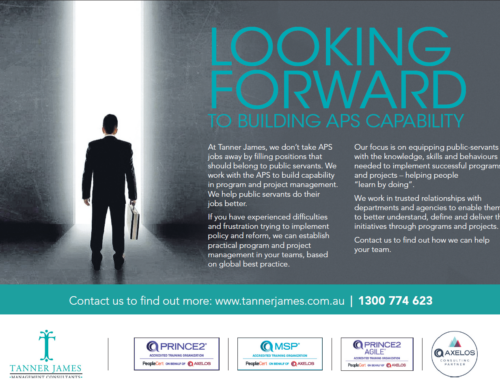The complexity and scale of business transformation taking place now is completely unprecedented, with huge changes taking place in all sectors – private, public and not for profit.
While transformation through projects and programs is not new, it is important for any organization to invest in building their capability to successfully lead, manage and deliver the levels of transformation that we are now seeing.
This is especially the case for governments across the world. In the eyes of the customer, services from public and private sectors are blurring and expectations are similar. As a result, the public sector needs to keep pace with developments within the private sector.
No matter which party wins the upcoming federal election in Australia, the government will no doubt drive the digital transformation agenda across the Australian Public Service (APS) to deliver better services, make better use of data and build capability. The benefits of transformation are potentially huge but delivering highly complex projects and programs can be incredibly challenging.
The UK public sector has extensive expertise tackling such a challenge. The government has a very large transformation portfolio that involves virtually all departments. They need to have the confidence that this portfolio is deliverable, and so have developed a practical set of principles that enable them to understand, communicate and lead successful transformation.
This guide, known as the seven lenses of transformation, came about through a recognition of the need to share experiences and learn collectively to improve their delivery capability and capacity.
At first glance, they may seem simple and somewhat obvious, but often the most profound things do! One senior executive said that the seven lenses prompted their team to “think through this organizational transformation from a variety of perspectives”.
The seven lenses are:
- VISION – sometimes known as a compelling picture of the future, the vision is a powerful means of aligning stakeholders around the purpose of the transformation. It sets the tone and direction for all activities carried out throughout the program, and inspires everyone towards the co-creation of outcomes and benefits.
- DESIGN – the creation of a target blueprint is vital, as we need to determine how the whole picture fits together in a coherent and consistent way. Without a design in place we risk having a range of disconnected work taking place, missed opportunities and the inability to deliver the transformation vision.
- PLAN – to deliver the vision and design we require a roadmap describing how we are going to get there. This should describe such aspects as the interdependencies of different elements of the program, and key responsibilities. However, transformation programs are large and complex and so the plans must be flexible, and constantly reviewed and changed to reflect the changing circumstances.
- LEADERSHIP – transformational leadership needs to reflect the complexity of the program. It demands far more than traditional project leadership, as it needs to encompass culture change, complexity, ambiguity and uncertainty, and disciplines such as organizational design.
- COLLABORATION – transformation cannot happen in isolation. It requires effective collaboration across a wide range of stakeholder groups. This in turn will require leadership beyond authority and into aspects of influence and compromise. This will take time, effort and patience as consensus does not happen quickly.
- ACCOUNTABILITY – simply put, having clear accountability for transformation enables productivity, improved decision making, and ultimately the delivery of better outcomes. With increased collaboration, this accountability is especially important. Transparent and open ownership of all elements of the transformation is essential for success.
- PEOPLE – transformation needs people. Having people with the right skills, behaviours and mindset to support and contribute to the program is fundamental for transformational success. The capability and capacity of the organization to provide these people must be a major consideration before starting out on the journey of transformation. It is far too common for organizations to over-estimate their ability in this area.
Leading transformational change has never been a more complex challenge. The seven lenses can help change leaders to better understand what is required to navigate through a transformation program. They can then also point them to further levels of advice and guidance that can be found in such publications such as ‘Managing Successful Programmes®’ (MSP), ‘PRINCE2®’ (for managing project management), and ‘AgileSHIFT®’ (for developing organizational agility).
Just like in the UK, the public service in Australia is responsible for an incredibly wide range of services that includes:
- delivering well over $170 billion in payments
- providing advice to 4.4 million users of business.gov.au
- 700 million digital and telephone transactions to Australians each year.
While the APS has been very successful in providing the services that it does, it will need to transform in order to meet the demands and requirements of the next few decades. Transformation is necessary, but it is not easy, particularly on this scale.
In the UK, the seven lenses are helping the government to tackle this transformation, and in the words of one senior executive, “provide a way of ‘seeing the wood from the trees’ and make sense of complex and detailed challenges”.






Leave A Comment